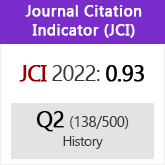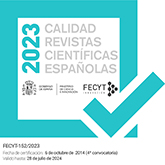Sacrificios caninos en las Jándicas: una hipótesis sobre el culto a Enodia en el ejército macedonio
DOI:
https://doi.org/10.3989/gladius.2016.0004Palabras clave:
Macedonia, Tesalia, Enodia, Filipo II, Alejandro Magno, Hécate, FerasResumen
El descuartizamiento de una perra como ceremonia de purificación previa a un combate ritual que el ejército macedonio celebraba en las Jándicas podría tener relación con el culto a la diosa Enodia, una diosa equivalente a Hécate en el entorno cultural tesalio y macedonio. A partir de los testimonios de las fuentes históricas y de los restos arqueológicos, se trata de probar esta hipótesis, en la que se plantea la posibilidad de que este ritual fuera incorporado con los contingentes tesalios que Filipo II introdujo en el ejército macedonio en el contexto de la profunda reforma militar que implantó al llegar al poder.
Descargas
Citas
Baring, A. y Cashford, J. (2014): El mito de la diosa . Madrid, Siruela.
Baege, W. (1923, or. 1913): De Macedonum sacris. Halle, Formis Descripsit Ehrhardt Karras.
Bermejo Barrera, J. C. (2001): «Hécate y Asteria: aspectos de la concepción del espacio en la Teogonía hesiódica». Fronteras e identidad en el mundo griego antiguo. III Reunión de Historiadores del Mundo Antiguo , 2000 . Universidad de Santiago de Compostela y Universidad de Vigo: 15-28.
Borza, E. N. (1990): In the shadow of Olympus. The emergence of Macedon . Princeton, Princeton University Press.
Burkert, W. (2007): Religión griega arcaica y clásica . Madrid, Abada Ediciones.
Calvo Martínez, J. L. (1992): «La diosa Hécate: un paradigma de sincretismo religioso del helenismo tardío». Florentia Iliberritana, 3: 71-82.
Campbell, J. (2013): Diosas . Gerona, Atalanta.
Carpenter, T. H. (1991): Arte y mito en la Antigua Grecia . Barcelona, Destino.
Chatzinikolaou, K. G. (2010): «Locating Sanctuaries in Upper Macedonia according to archaeological data». Kernos , 23: 193-222. https://doi.org/10.4000/kernos.1580
Chevalier, J. y Gheerbrant, A. (2007): Diccionario de símbolos . Barcelona, Herder.
Chrysostomou, P. (1993-1994): «Oi thessalomakedonikoi theoi ton katharmon». Makedonika, 29: 175-207.
Chrysostomou, P. (1998): I Thessaliki Thea En(n)odia i Pheraia Thea. Atenas, Tameio Archaiologikôn Poron kai Apallotriôséôn.
Chrysostomou, P. (2011): «The ancient settlement of Archontiko». The Archaeological Museum of Pella . Atenas, Latsis Foundation: 299-392.
Dubois, L. (1987): «Zeus Tritodios». Revue des Études Grecques, 100: 458-461. https://doi.org/10.3406/reg.1987.1519
Eliade, M. (2008, or. 1951): El mito del eterno retorno . Madrid, Alianza.
Farnell, L. R. (1895-1909): The Cults of the Greek States . Oxford, Clarendom Press.
Frazer, J. G. (2011, or. 1922): La Rama Dorada. Madrid, Fondo de Cultura Económica.
Gimbutas, M. (2014): Diosas y dioses de la Vieja Europa (7000-3500 a. C.). Madrid, Siruela.
Goukowsky, P. (2009): Études de philologie et d'histoire ancienne: Macedonia varia. Nancy, ADRA.
Gow-Page, A.S.F. (1965): The Greek Anthology: Hellenistic Epigrams . Cambridge, University Press.
Graekos, I. (2011): «War and hunting: the world of the Macedonian King and his companions». Heracles to Alexander the Great . Oxford, Ashmolean: 75-92.
Granier, F. (1931): Die makedoniscke Heeresversammlung. Ein Beitrag zum antiken Staatsrecht . Munich, Verlag C.H. Beck.
Graninger, C. D. (2006): «The regional cults of Thessaly». Cornell Theses and Dissertations. Cornell University. https://ecommons.cornell.edu/handle/1813/2595?mode=full
Graninger, C. D. (2009): «Apollo, Ennodia, and fourth-century Thessaly». Kernos , 22: 109-124. https://doi.org/10.4000/kernos.1775
Graninger, C. D. (2010): «Macedonia and Thessaly». A companion to Ancient Macedonia: 306-325. https://doi.org/10.1002/9781444327519.ch15
Grimal, P. (2008): Diccionario de mitología griega y romana . Barcelona, Paidós. PMCid:PMC2610327
Hard, R. (2008): El gran libro de la mitología griega . Madrid, La Esfera de los libros.
Hadzisteliou-Price, T. (1971): «Double and multiple Representation in Greek Art and Religious Thought». The Journal of Hellenic Studies , 91: 48-69. https://doi.org/10.2307/631369
Hatzopoulos, M. I. (1994): «Cultes et rites de passage en Macedoine». Meletemata, 19. Atenas, Éditions de Boccard. PMCid:PMC159277
Hocart, A. M. (1935): Le progrès de l'homme. París, Payot.
Kalleris, J. N. (1976): Les anciens Macédoniens, étude linguistique et historique . Atenas, Instituto Francés.
Kraus, T. (1960): Hekate: Studien zu Wsen und Bild der Göttin in Kleinasien ind Griechenland. Heidel berg, Carl Winter Universitat Verlag.
Kottaridi, A. (2013): Aigai, the royal metropolis of the macedonians . Atenas, Latsis Foundation.
Le Bohec-Bouhet, S. (2011): «Les chiens en Macédoine dans l'Antiquité». N. Badoud (éd.), Philologos Dionysios: mélanges offerts au professeur Denis Knoepfler . Genéve: 491-515.
Mastrokostas, E. (1978): «On the Grave Epigram from Pella, AAA X (1977) 259-263». Athens Annals of Archaeology, 11: 196-197.
Mazon, P. (1923): Hésiode, les travaux et les jours le bouclier . París, Les Belles Lettres.
Mazzola, E. (2006): «Ecate: solo dea delle donne?. La dea nelle testimonianzse litterarie dalle origini al III secolo a. C.». Acme, 59: 305-318.
Mili, M. (2015): Religion and Society in Ancient Thessaly. Oxford, Oxford Classical Monographs.
Molina Marín, A. I. (2015): «Tifones y gigantes en el mundo macedonio: el rey como símbolo del orden cósmico». Gerión , 33: 67-88. https://doi.org/10.5209/rev_GERI.2015.v33.50974
Molina Martín, C. (2014): Hécate: paradigma de la relación entre la mujer, la luna y la magia. Trabajo de fin de máster. Madrid, Universidad Complutense. http://eprints.ucm.es/28358/1 Eprints_TFM_Celia_Molina.pdf
Morgan, C. (2003): Early greek states beyond the polis . Londres, Routledge. https://doi.org/10.4324/9780203417751
Muller, K. O. (1820): Geschichten hellenischer Stämme und Städte I. Breslau, Verlag Von Josef Mar.
Nilsson, M. (1906): Griechische Feste von religiöser Bedeutung . Leipzig, B. G. Teubner.
Nilsson, M. (1961, or. 1940): Greek folk religion . Nueva York, Columnia University Press.
Nilsson, M. (1961-1967): Geschichte der griechischen Religion . Munich, Verlag C.H. Beck.
Papachatzis, N. (1958): «Pasikrata en Demetrias». Thessalika, I: 50-65.
Philippson, P. (1944): Thesalische Mythologie . Zurich.
Ridgway, B. S. (2001): Hellenistic Sculpture, I. Wisconsin, The University of Wisconsin Press.
Robert, L. (1960): «Une deésse à cheval en Macédoine». Hellenica, 11-12: 588-595.
Ronan, S. (1992): The Goddess Hekate. Hastings, Chthonios Books.
Rudolf, I. R. von (1999): Hekate in Early Greek Religion. Victoria, Horned Owl Publishing.
Serafini, N. (2015): La dea Ecate nell'antica Grecia: una protettrice dalla quale prottegersei. Roma, Aracne.
Tarn, W. (1928): «Macedonia and Greece». The Cambridge Ancient History, VII: 197-223. Cambridge.
Usener, H. (1913): Kleine Schriften IV . Cambridge, Cambridge University Press.
Wallbank, F. W. (2002): Polybius, Rome and the Hellenistic World: Essays and Reflections. Cambridge, Cambridge University Press. https://doi.org/10.1017/CBO9780511482953 PMid:14986662
Wilamowitz-Moellendorf, U. (1931): Der Glaube der Hellenen . Berlín, Weidmannsche Buchhandlug.
Descargas
Publicado
Cómo citar
Número
Sección
Licencia
Derechos de autor 2016 Consejo Superior de Investigaciones Científicas (CSIC)

Esta obra está bajo una licencia internacional Creative Commons Atribución 4.0.
© CSIC. Los originales publicados en las ediciones impresa y electrónica de esta Revista son propiedad del Consejo Superior de Investigaciones Científicas, siendo necesario citar la procedencia en cualquier reproducción parcial o total.Salvo indicación contraria, todos los contenidos de la edición electrónica se distribuyen bajo una licencia de uso y distribución “Creative Commons Reconocimiento 4.0 Internacional ” (CC BY 4.0). Puede consultar desde aquí la versión informativa y el texto legal de la licencia. Esta circunstancia ha de hacerse constar expresamente de esta forma cuando sea necesario.
No se autoriza el depósito en repositorios, páginas web personales o similares de cualquier otra versión distinta a la publicada por el editor.














